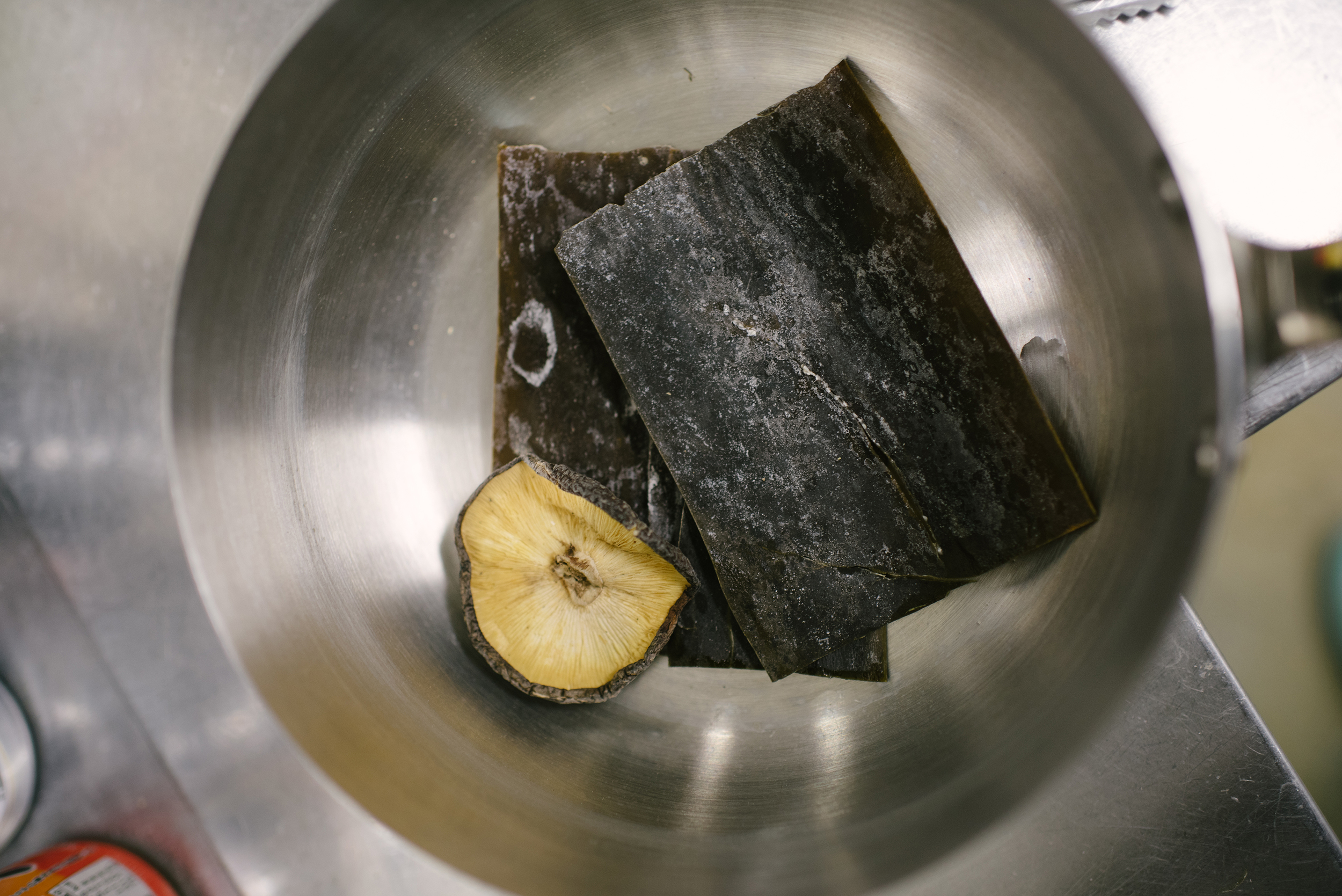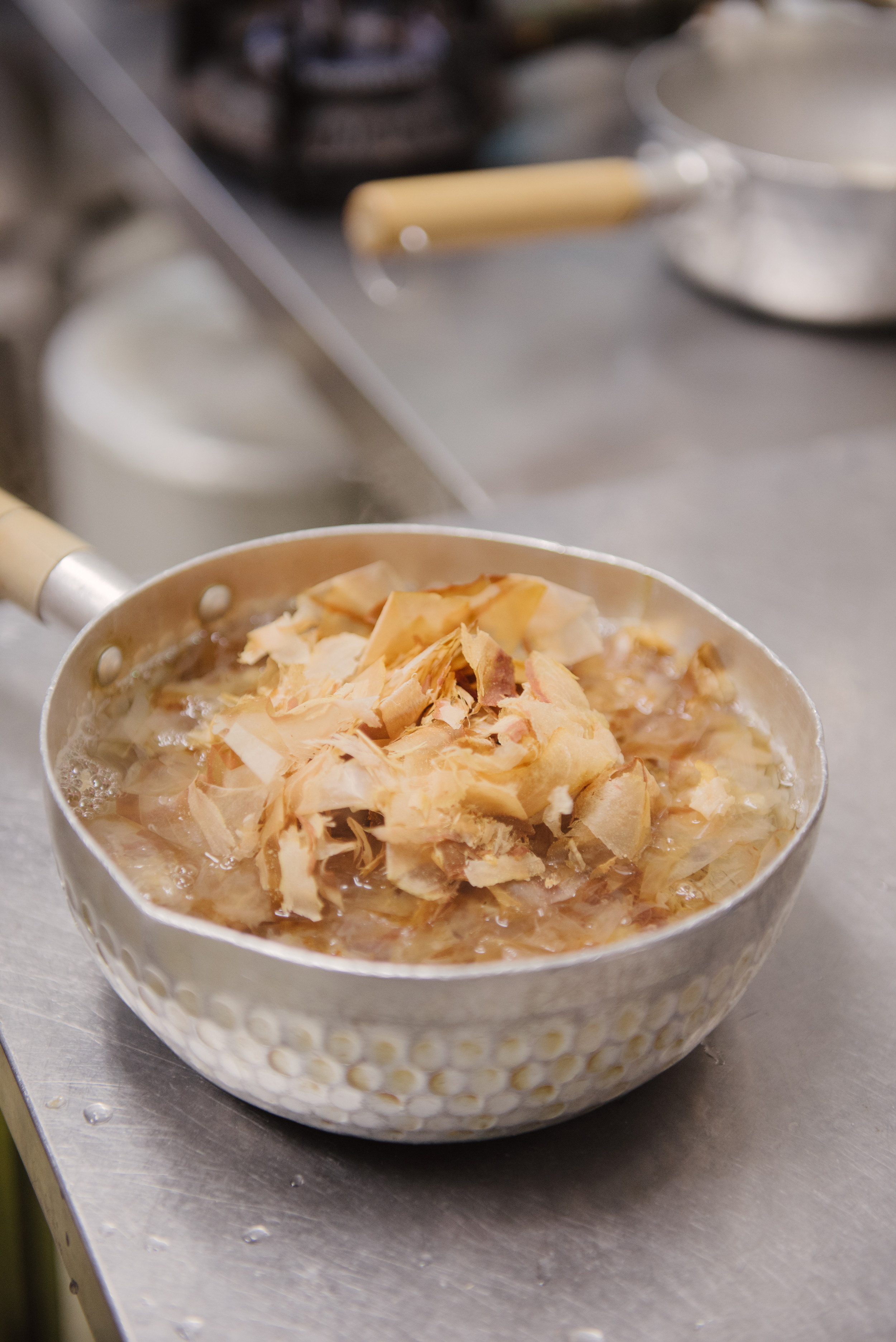The Tonkotsu Base is the holy grail of ramen soup bases, and this recipe follows the traditional recipe I learned to make from Sensei Miyajima Rikisai at the Miyajima Ramen School in Osaka, Japan. Tonkotsu, known as “white soup,” comes from two different regions in Japan. This version comes from the Kanto region of Tokyo. It uses a double-soup method, where two separate broths are combined right before serving, making a more complex and flavorful soup. Once you master the Tonkotsu Base, you’ve basically made Tonkotsu, Shio and Shoyu Bases in one go, so it will be worth your hard work!
Equipment: 30-quart pressure cooker (always read and follow the instructions provided with your
pressure cooker before you start)
Make in Advance:
Chashu
Tonkotsu Ramen Soup Base

Yield: 10
Prep time: 30 MinCook time: 4 HourTotal time: 4 H & 30 M
Ingredients
Seabura (boiled pork back fat) - Optional and not necessary unless you want the extra fat
- 11⁄ 2 lbs (700 g) pork back fat
- Water, to cover
Tonkotsu Soup
- 1⁄ 2 lb chicken feet, cleaned, extra skin removed and nails cut off (approximately 6 feet)
- 8–10 lbs pork knuckles/trotters, pounded with a mallet to release marrow
- 1 lb potatoes, unpeeled and sliced in big chunks
- 5 quarts water
Shiodare (salt flavor component)
- 1 large rectangular piece kombu (about 10 inches/25 cm long), cut into large squares
- 1 large or 2 small dried shiitake mushrooms, crumbled
- 1 quart water
- 2 tbsp bonito flakes
- 11⁄ 2 cups baby clams
- 1⁄ 2 cup salt
Shoyudare (soy sauce flavor component)
- Equal parts Shiodare and Chashu Braising Liquid (do not assemble until ready to serve)
Instructions
- Before cooking, you must have the Chashu with its braising liquid on hand to use later.
- If you are choosing to make Seabura, start by placing the pork back fat in a large pot, cover with water, bring to a boil, and simmer for 4 hours, uncovered.
- Start making the Tonkotsu Soup: In a separate pot of boiling water, blanch the chicken feet, drain, and then add them to the pressure cooker along with the pork knuckles or trotters and the potatoes. Cover with up to 5 quarts (4.7 L) water, making sure the total volume of water and food combined does not exceed half of the pot.
- Leave your pressure regulator weight off of the vent pipe. Turn heat to high until steam flows from the vent pipe (this may take up to 20 minutes) and continue to let vent for 10 minutes more to get all of the air out. Maintain high heat setting and place your pressure regulator weight on. Start timing your cooking when the regulator weight begins to jiggle or rock. It may appear as if it is leaking, but this is normal. Regulate the heat so that the weight only jiggles 1–4 times per minute. Start the timer and cook for 1 hour.
- Start making the Shiodare: In a medium-sized pot, bring the kombu, shiitake, and 4 cups (950 ml) water to a boil. Lower the heat and simmer for 5 minutes. Drain the kombu and shiitake and put the soup into a clean medium-sized pot.
- Return this drained soup to the stove, add the bonito flakes, and heat to a boil, then simmer for 5 minutes. Drain the bonito flakes and put soup into your other empty pot, pressing the flakes to release all their liquid.
- Return this drained soup to the stove and add the clams, bring to a boil, then simmer for 5 minutes. Drain the clams and put soup into your other empty pot. Add almost all the salt and whisk in. Note that the salt to soup ratio should be 20 percent, resulting in a very salty soup base or Shiodare. To be exact, before adding your salt, pour the soup into a quart measure and multiply by 20 percent to get the exact salt to add.
- After 1 hour, take the pressure cooker off the heat and allow the pressure gauge to return to 0 before gently removing the cover. Push down the pork bones to get the bone fat out and make the soup creamier and thicker. Cook on a medium low heat with the cover off for about 1 hour longer, mixing periodically.
- Directly into your serving bowls, add 1 tablespoon braising liquid and 1 tablespoon Shiodare per serving. If you are in a large kitchen and you are serving for many, you will need to figure out which ladles to use for the smaller measurements here and which to use for pouring the soup over.
- Only if making the Seabura - Drain and remove the pork back fat that has been simmering. Cut the strips into smaller 2-inch (5 cm) pieces. Into a medium-sized bowl, take a large-holed sieve and push a couple of pieces at a time through the sieve so that you see it come thorugh the other side in small little bits. Repeat until all pieces are pushed through. Your Seabura is ready. Set aside.
- Strain all of the solids from the Tonkotsu soup in the pressure cooker and transfer the soup to a separate pan and keep warm. Right before serving, crank it up to a boil.
- Remove the Chashu from it’s braising liquid and cut into 1/4 inch (6mm) thick rounds. Sauté your sliced pork in a skillet for 1-2 minutes to render the fat and make the slices crispy before placing them on top of ramen. Use as many slices as you’d like to serve on your ramen - typical amounts vary from 1-3 slices.
- Start boiling your water for your noodles and have all of your other components ready. When the noodles are nearly ready, assemble your bowls by adding 1 cup (235 ml) of piping hot Tonkotsu soup to each of your prepared bowls of Shoyudare (Step 9) and 1 tablespoon of the Seabura (Step 10) to each serving portion, then add your noodles and place the sliced Chashu on top along with desired toppings.




